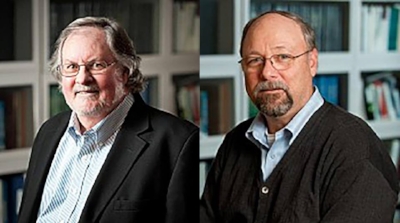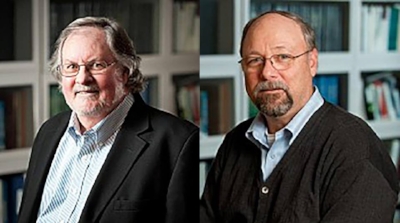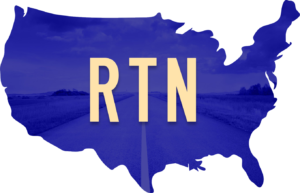*-If you are an educator who would like to use this episode as part of your class, please email us at [email protected] and we will provide it to you free of charge.
Since August 6, 1945, when the Enola Gay dropped the first atomic bomb on Hiroshima, the world has been aware of the awesome force that nuclear science could unleash. Using that force for energy production proved that nuclear technology could improve our lives, but nuclear energy has had a hard time shaking its association with destruction, and the catastrophes at Three Mile Island (1979), Chernobyl (1986) & Fukushima (2011), have only heightened public concern over the safety of nuclear power.
In other words, nuclear power has a bad rap. But does it deserve it?
Not according to scientists Jim Clarke and Steve Krahn of Vanderbilt University. Both men have distinguished careers in the nuclear power industry that have spanned half the history of nuclear energy. In this episode of The Road to Now, Jim and Steve break down the risks and rewards of using nuclear energy, and argue that the public response to Three Mile Island and other spectacular events may have led us to poor conclusions about how we produce energy. They also remind us that nuclear energy produces no carbon, which makes it particularly valuable in the age of global warming.


Jim Clarke (left) and Steve Krahn (right)
Dr. Jim Clarke is Professor of the Practice of Civil and Environmental Engineering and Professor of Earth and Environmental Sciences at Vanderbilt University. Jim has served as an advisor to the Nuclear Regulatory Commission (NRC) and is currently on the NRC Advisory Committee for Reactor Safeguards and its subcommittee on Radiation Protection and Nuclear Materials. He has over 35 years of professional experience with approximately 150 publications and presentations.
Dr. Steven Krahn is Professor of the Practice of Nuclear Environmental Engineering in the Department of Civil and Environmental Engineering at Vanderbilt University. He has more than 30 years of experience in his field and previously served in the U. S. Department of Energy as the Deputy Assistant Secretary for Safety & Security in the Office of Environmental Management.
Both guests highly recommend that you visit the US Energy Information Administration website (eia.gov) for accurate and updated information on energy production in the United States.
We’d also like to thank Brenda Ellis in the Vanderbilt School of Engineering for her help in arranging our interview with Jim and Steve.


List of Sources Complied by Jim Clarke and Steve Krahn
US Department of Energy:
-Energy Information Administration
-Office of Nuclear Energy
–Office of Energy Efficient and Renewable Energy
–Office of Fossil Energy
–Office of Environmental Management
Videos from the CRESP Fuel Cycle Course:
-Radioactive Waste Management – Dr. Steve Krahn
–Environmental Performance Assessment – Dr. Jim Clarke
–Reactors and Fuels and Nuclear Reactors – Allen Croff
–Quantifying the Risk of Nuclear Fuel Recycling Facilities – Dr. John Garrick
–Overview of the Nuclear Fuel Cycle and Its Chemistry – Dr. Raymond G. Wymer
Print Sources:
-The Reporter’s Handbook on Nuclear Materials, Energy, and Waste Management, M. R. Greenberg, B. M. West, K. W. Lowrie and H. J. Mayer, Vanderbilt University Press, 2009.
-Nuclear Waste Management, Nuclear Power and Energy Choices Public Preferences, Perceptions and Trust, M. R. Greenberg, Springer, 2013.
-Future Energy: Opportunities and Challenges, Thomas W. Kerlin, International Society for Automation, 2013.
-Fuel Cycle to Nowhere: U. S. Law and Policy on Nuclear Waste, R. B. Stewart and J. B. Stewart, Vanderbilt University Press, 2013.
Other Links:


This episode brought to you with support from Ramseur Records.


